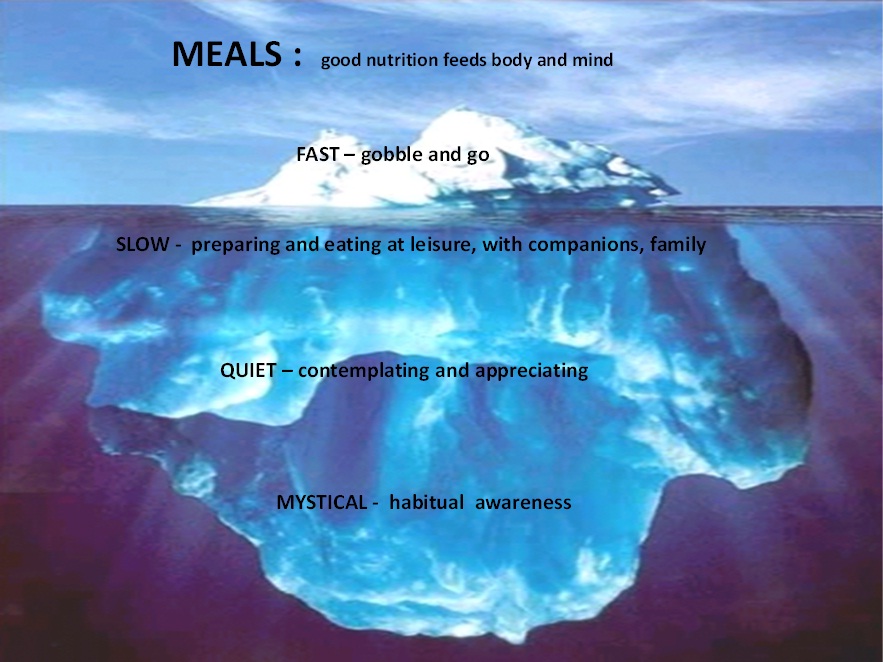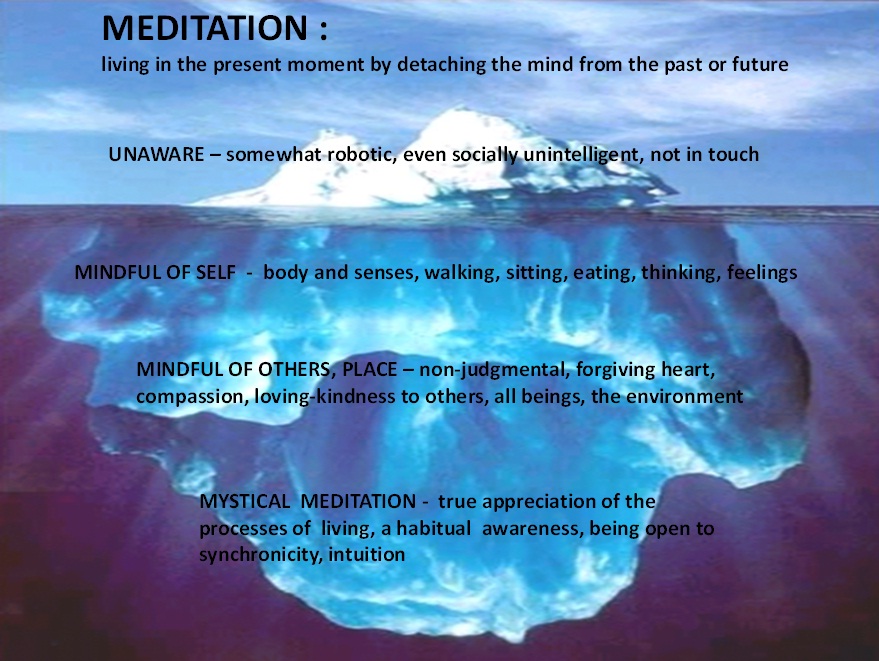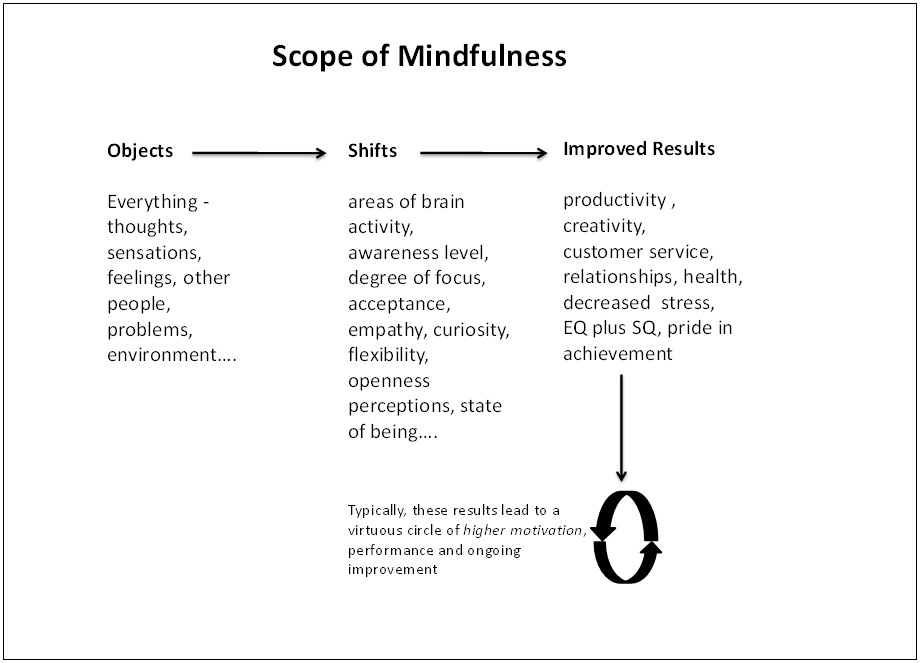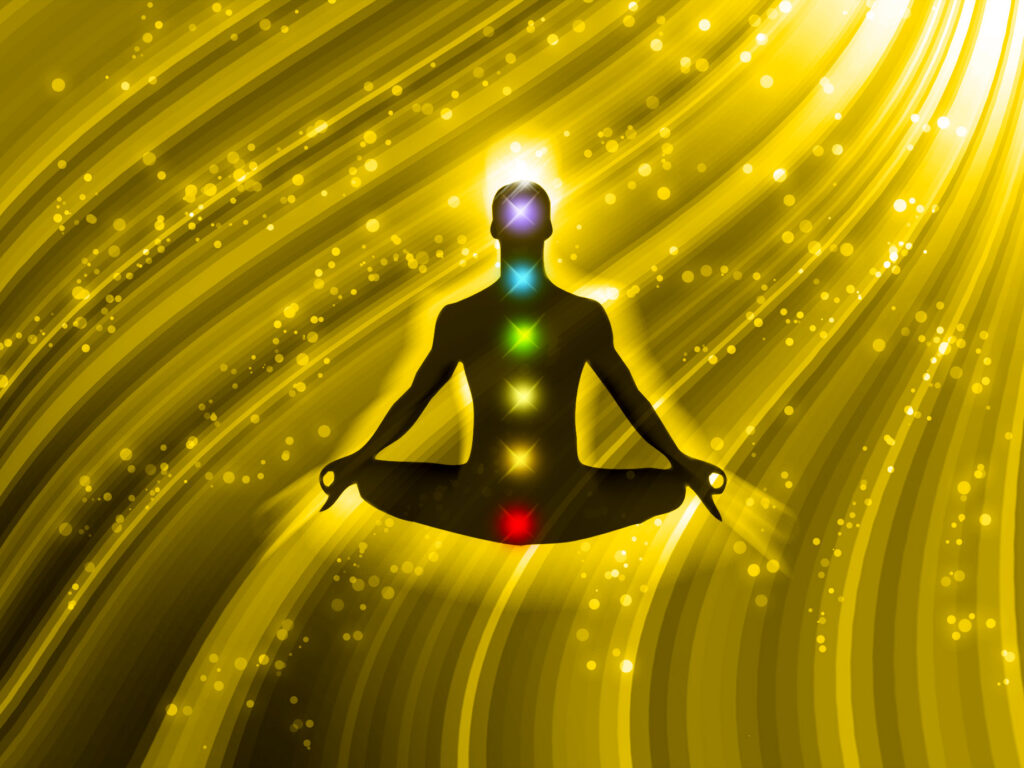Deeper mindfulness of the basics

- Fast: the gobble-and-go Big Mac style, meals taken on the run, mindless
- Slow: taking time during the preparation and eating, of pleasurable, companionable sharing, French- or Italian-style. Good, healthy nutrition tastefully served, feeds the body and the mind. Actually traditional braai's (barbecues) can sometimes fit this category
 "Take breathing meditation. Controlled, deep breathing impacts on our voice quality and on our emotional state. It helps to induce calm within when we are nervous, for example just prior to
"Take breathing meditation. Controlled, deep breathing impacts on our voice quality and on our emotional state. It helps to induce calm within when we are nervous, for example just prior to
launching into a speech or presentation, or when we become upset during a conversation." - Quiet: before, during and after a meal we drink water, contemplate the food source, miracle of growth, labourers in far-flung fields, the miracle of modern day transport, sensory pleasures of colour, smell, taste, texture, temperature, even sound (hearing food sizzling on the grill or being crunched while eating), we marvel at the body's design and digestive processes, are aware of the privilege of eating as well as we do
- Mystical: an even deeper, habitual awareness of the goodness and rightness of eating and drinking well. Engaging all of our senses and infusing every single present moment with importance, beauty, harmony, calm and simplicity. Like a Japanese tea ceremony
Another example:

Prana, the Sanskrit word for breath also means life. From birth to death we breathe. When aroused, scared, in panic, anxious or ill, then our pattern, depth and pace of breathing changes. A basic meditation is to connect with the breath after becoming comfortable and bringing our awareness into the present moment. As we focus on our breathing, we notice the movement in our chest and the diaphragm (stimulating stomach, liver, pancreas), the contracting and relaxing of our abdominal muscles, the passage of air as we inhale (oxegenating the blood) and
exhale (expelling carbon dioxide and impurities – we may notice that our outgoing breath is warmer). The practice tones up respiration and circulation, renews body tissues, calms us. We become in touch with an aspect of our inner beauty. We can use it to connect to others - a Buddhist meditation, tonglen, for example, is an active imaginative exercise in which you breathe in another's suffering and then breathe out loving-kindness.
"Breathe and you know that you are alive.
Breathe and you know that all is helping you.
Breathe and you know that you are the world.
Breathe and you know that the flower is breathing too.
Breathe for yourself and you breathe for the world.
Breathe in compassion and breathe out joy.
Breathe and be one with the air that you breathe.
Breathe and be one with the river that flows.
Breathe and be one with the earth that you tread.
Breathe and be one with the fire that glows.
Breathe and you break the thought of birth and death.
Breathe and you see that impermanence is life.
Breathe for your joy to be steady and calm.
Breathe for your sorrow to flow away.
Breathe to renew every cell in your blood.
Breathe to renew the depths of consciousness.
Breathe and you dwell in the here and now.
Breathe and all you touch is new and real." (1)
So too can we use other forms of meditation: sitting, witnessing our thoughts, sensing our feelings, doing self-guided active-imagination meditations, even walking. We can walk busily to get from A to B, or mindfully begin to sense the pressure on our feet, the movement of our limbs, distribution of body weight, ponder the mechanics of the body and be aware of what we encounter on our walk. And at a deep level have a sense that we "Kiss the earth with your feet..." (Tich Nhat Hanh).
It is a good discipline to set aside time each day for meditation, and at a deeper level the practice becomes embodied in all that we do. Meditating on a thought, an idea, an issue, a challenge in a calm, focused, non-judgmental manner – allowing different perspectives to emerge - is in fact what reflection is all about. As people deepen their practice, a measured, more effective response other than mere 'busyness' sets in.
Benefits of mindfulness to business

The practice is especially useful when preparing for organisational transitions, as regular mindfulness practice leads to the development of a 'hardy, robust personality' (2), better able to cope with the stress of change - some attributes being empathy, adaptability, positivity, higher self-esteem, assertiveness and an inner locus of control.
To read part 1, click here
References:
- Reprinted from Breathe! You Are Alive: Sutra on the Full Awareness of Breathing (1988, 2008) by Thich Nhat Hanh with permission of Parallax Press, Berkeley, California, www.parallax.org
- Zimbler, Alan, and Associates Course Notes Johannesburg 1992
Graham Williams of Centre-ing Services works with organisations to introduce mindfulness and imagination, utilising story and practical exercises as mechanisms to impart new outlooks, skill and confidence. He is a thought leader for the Institute of Management Consultants. Members of his http://www.haloandnoose.com initiative have access to loads of information on mindfulness, imagination and story. Graham would welcome questions on any aspect of deeper mindfulness









